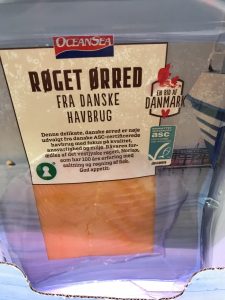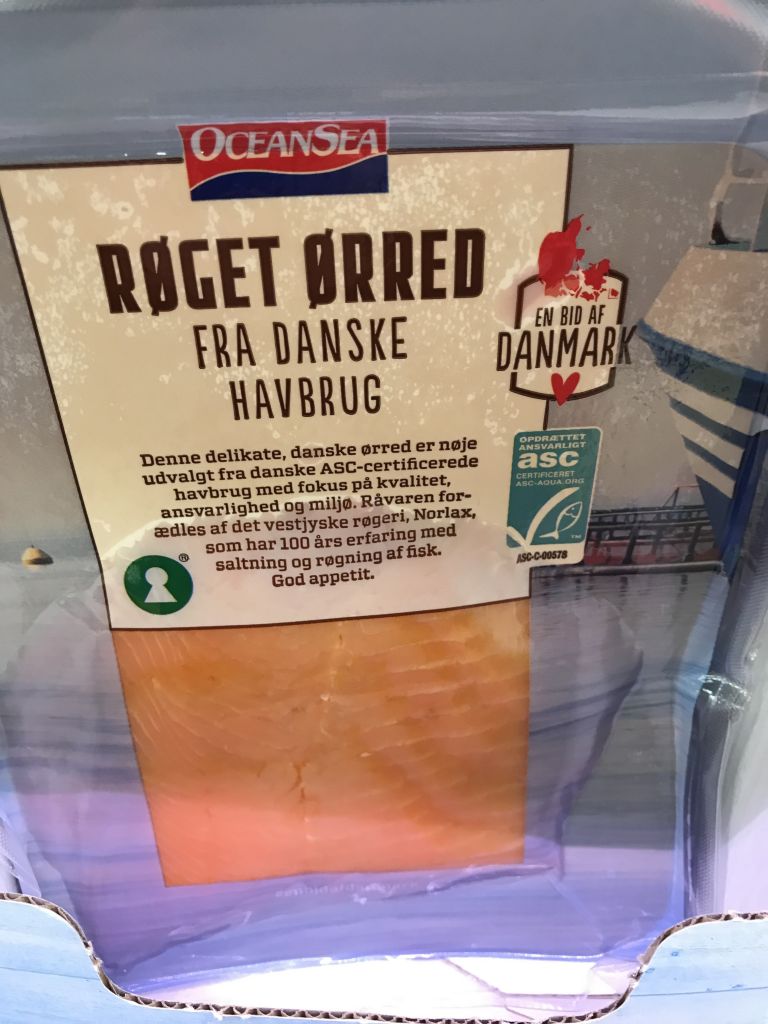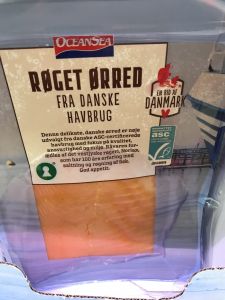Canada: Fish Farmer magazine reports that a proposal by Canada’s ruling Liberal party to ban all open net salmon farming in British Columbia by 2025 has been slammed as reckless by the Canadian Aquaculture Industry Alliance (CAIA). The pledge supported by various political groups has now been accepted as official future policy by the Liberal party. They want to see all salmon farming in closed containment, even though it is still unproven technology.
This policy if implemented, will ensure only one thing and that is that the west coast of Canada will have no farmed salmon and more critically no wild salmon either. The latest misguided policy of removing salmon farms from around the Broughton Archipelago will not bring back wild salmon to the region and neither will this new proposal to remove all open pen farms from all of the west coast. Clearly, those advocating for the removal of salmon farms are paying no attention to the fact that all wild salmon populations are in trouble no matter where they are located. The only possible exception is in Alaska and that might have something to do with their aggressive hatchery policy.
It is too easy to forget the millions of dollars that were some years ago pumped into campaigns to discredit farmed salmon. At least, thirty-three million dollars were spent by some US charitable foundations on campaigns like ‘Farmed and Dangerous’. These failed to persuade US consumers to stop buying imported farmed salmon but have since formed the basis for the constant negativity about the salmon farming.
British Columbia has had its own form of ‘charitable foundation’ in the form of the wealthy Allard family. The Globe & Mail reported back in 2017 that at least 20 donations had been made to the Liberal Party since 2014 totalling $120,000. Tony Allard, a local entrepreneur and president of Hearthstone Investment, is also chairman of an organisation called ‘Wild Salmon Forever’. In 2018, Mr Allard wrote an op-ed for the Vancouver Sun titled ‘Let tenures for open net pens salmon farms expire – the future of industry is on land’. This commentary sounds very much like the new proposed Liberal party policy.
One of the Power Point presentations we give when invited to speak begins with a slide of a nuclear mushroom cloud. The audience think we are joking but we often wonder whether there are some who believe that salmon farming is a bigger environmental crime than dropping the nuclear bomb on Hiroshima. Canada may now be dropping its nuclear bomb equivalent on the salmon farming industry there. The real concern is that it may be the first of many.
Shocking: Poor salmon farming critic Don Staniford has been ‘shocked’ by the statistics in the annual aquaculture production report issued just recently by the Scottish Government. These show that production has fallen by 18% over the last year, which is not surprising given the overly reported mortality occurrences last year. We cannot understand why Mr Staniford is shocked since he issued his own press release last week picked up by the National newspaper in which he stated that the Scottish Government’s annual report will show a ‘drastic’ fall in production. This was already predicted in the 2017 annual report with a figure of 21% less salmon produced and a total of 150,774 tonnes. The actual figure for 2018 was 156,025 so the salmon industry actually did a little better than predicted. As he has had a year to accept this fall, we cannot see why Mr Staniford is so shocked. Except he likes to be shocked by anything to do with the salmon farming industry. He would have been just as shocked had the salmon industry actually increased production. He simply likes the dramatic effect to try to make whatever point he is trying to make.
Anything that will undermine the salmon farming industry appears to be fair game to Mr Staniford. His latest posting is of ‘sickening’ pictures of diseased wild fish taken from the Rivers Dee, Forss, Garry, Conon, Cassley and Helmsdale. Mr Staniford says that the killer question is whether these diseased fish are being infected by diseases spread by Scotland’s salmon farms. We at Callander McDowell, can reassure Mr Staniford that the only thing being spread is his own malicious nonsense.
Diseases were detected in wild Scottish salmon long before salmon farming was established in Scotland and will continue to be detected in wild salmon even if salmon farming was relocated to land based systems. Salmon get sick whether in farms or in the wild. That is a natural occurrence.
This latest outbreak is not just limited to Scotland either, but has been observed round the north Atlantic. The cause of the recent outbreak has yet to be established but Mr Staniford now offers those seeking an answer a plausible explanation. Earlier this year, we wrote that some scientists had proposed that a possible thiamine deficiency due to changes in the nutritional profile of the fish’s food may be linked to the disease. Now the Twitter critics are suggesting that Mr Staniford’s explanation shows that we got it wrong because as we all know salmon farming is to blame for all the problems in the world today, even the appearance of some very sad people who prefer to hide behind the anonymity of Twitter. Maybe one day they will be willing to emerge and actually debate the issues rather than just fling mud. Now that would be truly shocking.
Too late: The Fish Site discussed a new report from Rabobank entitled ‘How to Succeed in Aqua Feed.’ This says that the aquafeed industry needs to ‘think out of the box to find growth’. We at Callander McDowell disagree. We think the aquafeed industry should have been thinking about future growth twenty years ago as now it might be too late. In fact, even this report is about twenty years too late. The writing was on the wall as to the trajectory of the feed sector long ago and unfortunately, they failed to respond simply because they could see no threats to their business model, even though the problem was staring them in the face. Why would any large farming company be willing to pay for a branded feed? Brands cost money and no farming company wants to face a large feed bill just to maintain a brand.
There are many producers of animal feed and in the early days of salmon farming, some made feed for fish too. However, the feed industry changed when it was recognised that rather than produce pressed pellets, extruded feed could absorb much higher levels of oil. Feed companies would only invest in cooker extrusion if they thought it would pay off and for those that did, the rewards were high because effectively, they wiped out any possible competition. Brands were seen as good as they represented not only an investment in technology but also in research. This was fine as long as salmon prices remained high but as prices fell with increased production, it was inevitable that farming companies would start to question why they had to pay so much extra for their feed and that surely they could do it themselves for much less. This was a discussion that took place long before Mowi built their first feed mill.
The solution was to turn from branded feed to contract manufacturer, producing dedicated feed for each company at ingredient cost price plus a fee per tonne. There was still potential to make money because there was scope to benefit from buying feed ingredients in large volumes. Some companies went down a form of this route but still held on to the belief in their brand. The Mowi feed mill was the outcome. Now others are following suit leaving the feed companies competing for a smaller share of the business and inevitably there will be casualties.
Rabobank propose four different solutions to this problem. The first is to partner with new technology companies and offer wider range of assistance to improve efficiency. The second is for feed companies to move into animal health, whilst the third involves developing novel feed ingredients. The last suggestion is for the feed industry to invest in RAS and offshore technology to help direct future development of the industry.
We think this is a case of too little too late. In fact, we believe that feed companies are already exploring some of these options, but they are unlikely to make up for the loss of the core feed business.
Shot: Recently, a new convert to the anti-salmon farming club from Extinction Rebellion has been tweeting about the plastic shards that can be found on a beach where currently one equipment manufacturer is assembling some cages. We anticipate that when the work is finished the beach will left in the same state as before work started. It’s always a puzzle to us that so-called environmentalists pick up on any issue connected with salmon farming but ignore wider and much more serious issues. For example, whilst this particular individual was sailing under engine around lochs to protest about salmon farms, his Extinction Rebellion colleagues in Manchester were blocking main roads through the city to draw attention to the impacts of too many cars on the environment. During the summer, the west coast of Scotland can be clogged with cars and motor homes, yet we have not heard of any protest there.
We mention the wider impacts on the environment of other activities because we recently read in the Times about the impacts of shooting for sport. Apparently, about 6,000 tonnes of lead is fired from shotguns and rifles every year of which about 2,000 tonnes is left as fragments on the soil. These are often mistaken as food by scavenging birds and the newspaper states that there is a growing body of scientific evidence that links this shot to wildlife death. Lead found in shot gamebirds can also be a risk to those who eat the meat.
The Times says that changes are afoot with an increasing number of countries banning lead shot. It is now outlawed in Denmark, the Netherlands and the Flemish region of Belgium. California banned lead ammunition for hunting. The EU is considering a ban for shooting game such as wildfowl. In July Waitrose, Britain’s largest retailer of game, banned the sale of birds shot with lead.
The paper says that shooting organisations have largely defied attempts to regulate lead ammunition mainly because they are worried that it is not lead but shooting that is the main target for those who oppose the use of lead. In addition, attempts to come to any agreement have been undermined by the number of interest groups and a lack of political courage to address the problem.
We suspect that the reason that the environmental sector has not been tackling this issue is that they are all too busy attacking salmon farming, even though the impacts are minimal by comparison.
Interestingly, salmon farming critic who is something of an eco-warrior taking his kids out of school to protest about climate change despite being asked by the school not to do so, has close links to the shooting industry as illustrated by an article in the Shooting Times. So, whilst he is happy to post tweets about plastic from salmon farming, he has never mentioned the issue of lead shot pollution.
Postscript: The new member to the anti-salmon farming club has seemingly just launched a new website – Friends of Loch Creran. The target of his concern is the news that the former Sealife Centre, which closed down last year, is the focus of an application from an aquaculture supply company to turn it into an assembly base for new cages. A video has been posted that forms the basis of an objection to the new development claiming that the loch is a protected site that is going to be home to a huge industrial factory development. The comment is that this huge dirty industry tramples everything in its path.
Clearly, this new member of the anti-salmon farming club just takes everything he hears for granted without actually bothering to learn the real facts. He bemoans the loss of the Sealife Centre but isn’t aware that it was originally established by members of the salmon farming industry. It was sold in 1987 because it didn’t fit in with the new owner’s farming strategy. We wonder if he had been around at the time, he would have objected to the commercial development of the centre which was on untouched land. Now it will have a new use removing the need to assemble cages on the shoreline, of which he is also critical.
This new critic also says that cages will no longer be required since Scotland will soon follow on from Denmark in banning salmon farming. By coincidence, we have been in Denmark this week and would like to point out that cage farms in Denmark are for rainbow trout. It is also interesting to note that Denmark was always hailed as the leader in land-based trout farming, yet clearly, the industry felt the constraints of farming on land merited a move to pens in the sea.

As we have suggested, there is a small vocal minority who believe salmon farming to be the worst environmental disaster to beset the planet and even a lack of any supporting evidence will never convince them otherwise.


